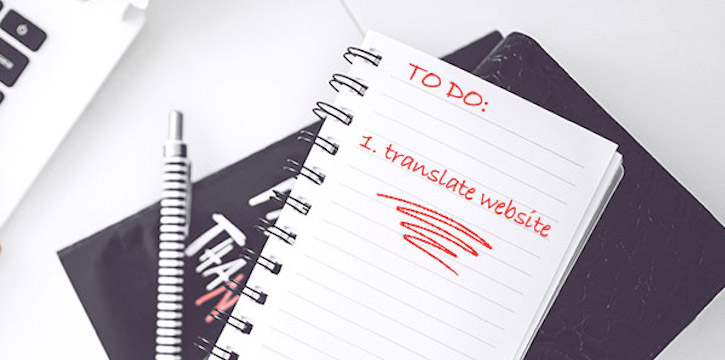European trade is continuing to grow. Concepts like the single digital market are starting to take shape and consumers differentiate less and less between their country of origin and where they purchase their goods. Recently, a study published by Pitney Bowes showed that around 70% of consumers had already purchased something from a foreign website. However 55% of clients won’t buy anything if the site isn’t available in their native language.
So any business struggling to obtain the same level of success internationally as in their country of origin, should take a closer look at their translation strategy. Whilst it may seem over the top, a translation strategy makes perfect sense if you take into account the resources and sales associated with it. Why not plan your translations as carefully as you would launching on a new market?
Classic internationalisation strategies
A classic internationalisation strategy usually starts with the following three points:
1) Target market
What type of people need my product or service in each target country? How big are these groups? What routines do they have? What are their consumer habits?
2) Sales channels
Which channels can I use to best reach my target market? Which platforms, market places or websites are particularly popular in my target country?
3) Organisation
Who will manage this task or these tasks for the new target market? Should I manage everything centrally or should I work with local colleagues and representatives? What corporate structure should I opt for?
Once these questions have been answered, you are ready to start trading on the foreign market. Step 1: translation strategy for sales. This step is based on the same strategic points.
Do you need a translation strategy?
1) Target market
In the context of source language, it’s all about the ability to correctly assess the market: regional specificities should be taken into consideration as well as different registers of style.
An example: I’m selling cardigans in American markets and I call them by their British English name ‘cardigans’ instead of the US version ‘sweaters’ ; well fewer visitors will be able to find me using organic referencing, so the conversion rate will be lower. It’s also likely visitors will assume that the merchandise is arriving from the UK so delivery will take longer.
My advice: request translators who are native speakers of your target country to ensure your text is authentic and respects good practice when it comes to referencing.
2) Sales channels
To establish a trust-based relationship with your clients, the first step could be offering your products to a local market. This will require integrating large volumes of translation without losing your page set-up or content. Using a plug-in or API is a good way to avoid wasting time or losing information with manual integration.
If the main sales channel is your own website, one of the main requirements for translation is coherence. All the content on your pages should be in the same languages, including menu elements and footnotes.
An example: an umbrella manufacturer has carefully translated their product information and maybe even adapted their emails and design to suit the local market. However, on the payment page of the French site, if part of the form is incomplete, the software sends the client a message…in Portuguese. This could cause the client to lose faith in the site and potentially abandon the purchase.
My advice: take a snapshot of all the text and test the pathway a potential client would take when making a purchase. Don’t fall into the trap of thinking of English as a universal language, so it will do in the place of a proper translation strategy.
3) Organisation
The volume of your translations can change depending on how the structure of your business evolves. You won’t have the same quantity of translated content if you move on from having a Country Manager to opening a local subsidiary with a team of several staff. So you’ll need to be flexible when it comes to managing your translation strategy.
An example: the Product owner needs to translate 50 labels into 3 languages urgently, the marketing department ordered promotional material in these languages just few hours ago and the on-site Country Manager is still waiting for some product sheets to be translated. Whether you work with a few freelancers or an in house team, this kind of scenario can quickly lead to too much work and too little time to complete it.
My advice: when it comes to translation, use a system where everyone can send their content to the same place, and allow freelance translators can work on it, this means you can see all the projects and their progress at the same time.
Translations occur so often when it comes to internationalisation you don’t want them to become a headache. It is well worth worth tackling them in a structured way right from the beginning. It will mean you can quickly increase your client base and conversion rates on your multilingual site without needing a complete rebranding campaign.
For a better overview of things to look out for when translating a website download our free ebook!







